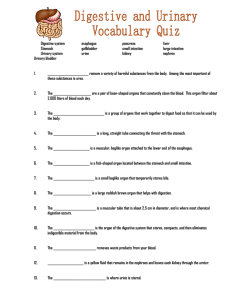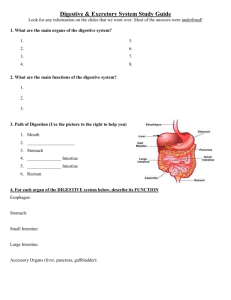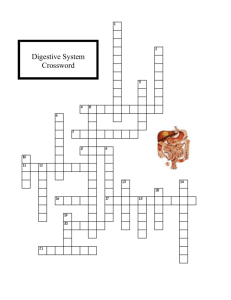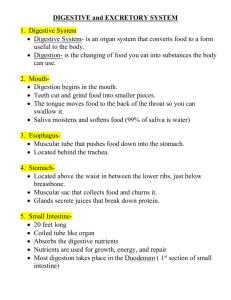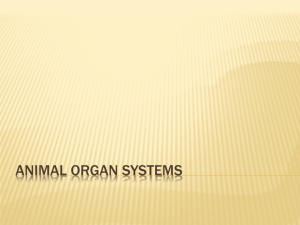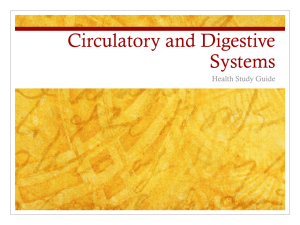Study Guide – Body Systems
advertisement
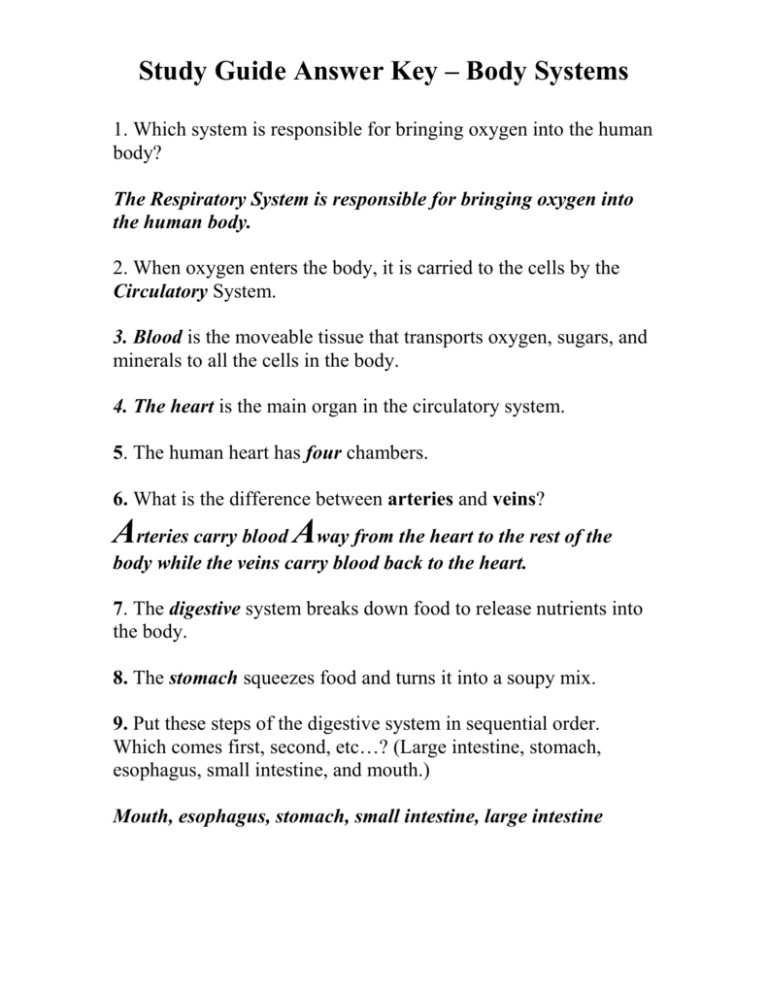
Study Guide Answer Key – Body Systems 1. Which system is responsible for bringing oxygen into the human body? The Respiratory System is responsible for bringing oxygen into the human body. 2. When oxygen enters the body, it is carried to the cells by the Circulatory System. 3. Blood is the moveable tissue that transports oxygen, sugars, and minerals to all the cells in the body. 4. The heart is the main organ in the circulatory system. 5. The human heart has four chambers. 6. What is the difference between arteries and veins? Arteries carry blood Away from the heart to the rest of the body while the veins carry blood back to the heart. 7. The digestive system breaks down food to release nutrients into the body. 8. The stomach squeezes food and turns it into a soupy mix. 9. Put these steps of the digestive system in sequential order. Which comes first, second, etc…? (Large intestine, stomach, esophagus, small intestine, and mouth.) Mouth, esophagus, stomach, small intestine, large intestine 10. What happens to undigested food in the large intestine? Water and minerals are taken out of it and taken to the blood. What is left over leaves the body as solid waste. (Otherwise known as …?) 11. Food moves in a sequence through the digestive system. What is the last part food moves through? The large intestine is the last part of the digestive system that food moves through. 12. Villi are the tiny folds that line the small intestine and increase surface area so more nutrients are absorbed. 13. Describe one way that the small intestine and the large intestine are similar. Describe one way that they are different. They are similar because they are both part of the digestive system. They are both tube-shaped and they both break down food. They are different because the small intestine digests fats, carbohydrates, and the rest of the food, while the large intestine absorbs the water and minerals that remain. 14. The excretory system is the system that removes wastes and helps maintain the water levels in the human body. 15. Filtering urea from the blood is the main job of the kidneys. 16. True or False: All organisms produce waste. 17. Waste in the kidneys is converted to urine. 18. What is the name of the muscular organ that stores urine until it is ready to be eliminated? It is called the bladder. 19. How are kidneys similar to dialysis machines? They both filter wastes from the blood. Use the words from the box below to fill in the blanks. vein capillaries artery heart kidneys digestive system circulatory system excretory system esophagus stomach 1. Esophagus is a muscular tube that pushes food towards the stomach. 2. The circulatory system carries oxygen and nutrients to all the cells of your body. 3. A blood vessel that carries blood back to the heart is called a vein. 4. The digestive system is a group of organs that work together to break down food into smaller pieces the body can use. 5. A blood vessel that carries blood away from the heart is called a(n) artery. 6. The heart is a muscular organ at the center of the circulatory system. 7. The stomach is a muscular organ that mixes and stores food and turns it into a soupy mix. 8. The excretory system removes waste and maintains water balance. 9. Kidneys are a pair of bean-shaped organs located near the middle of the back. 10. Capillaries are tiny, very thin blood vessels.

